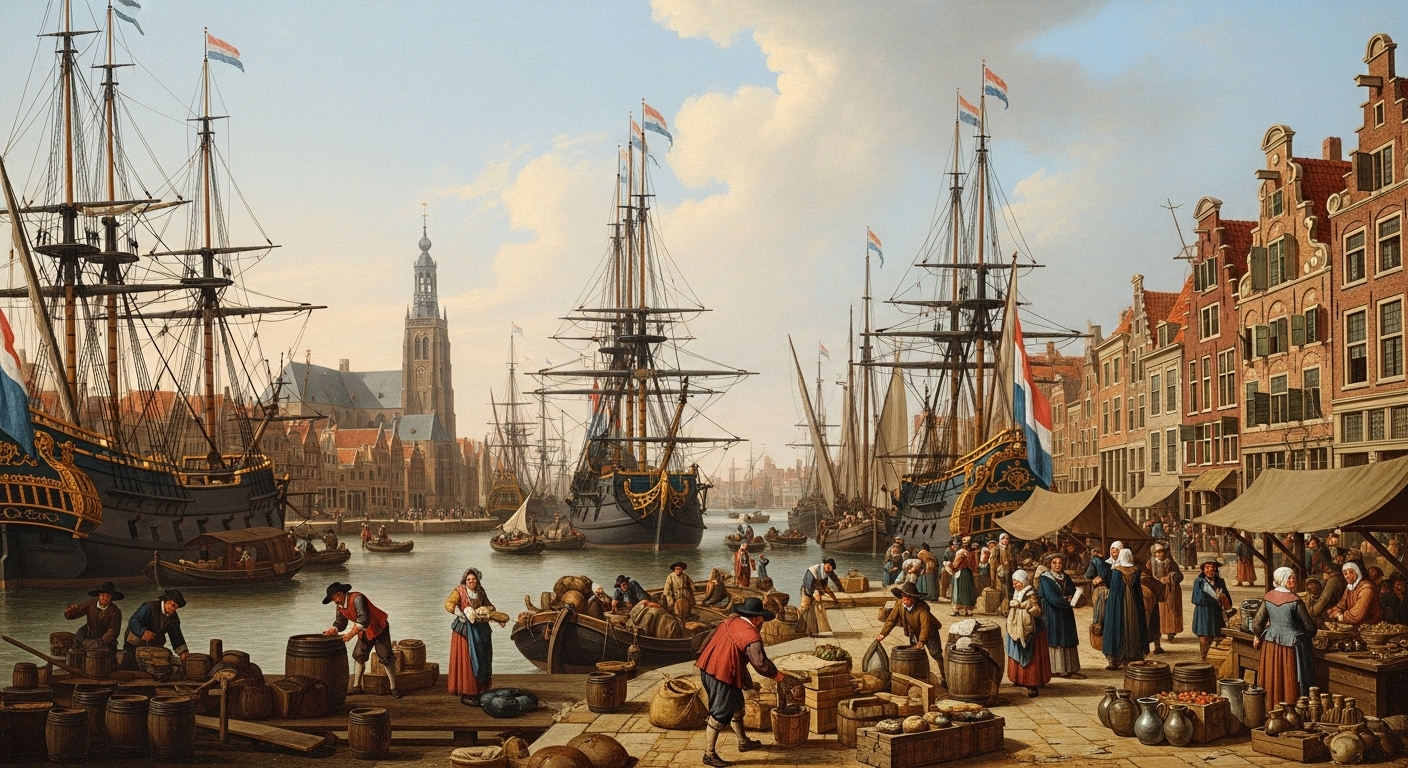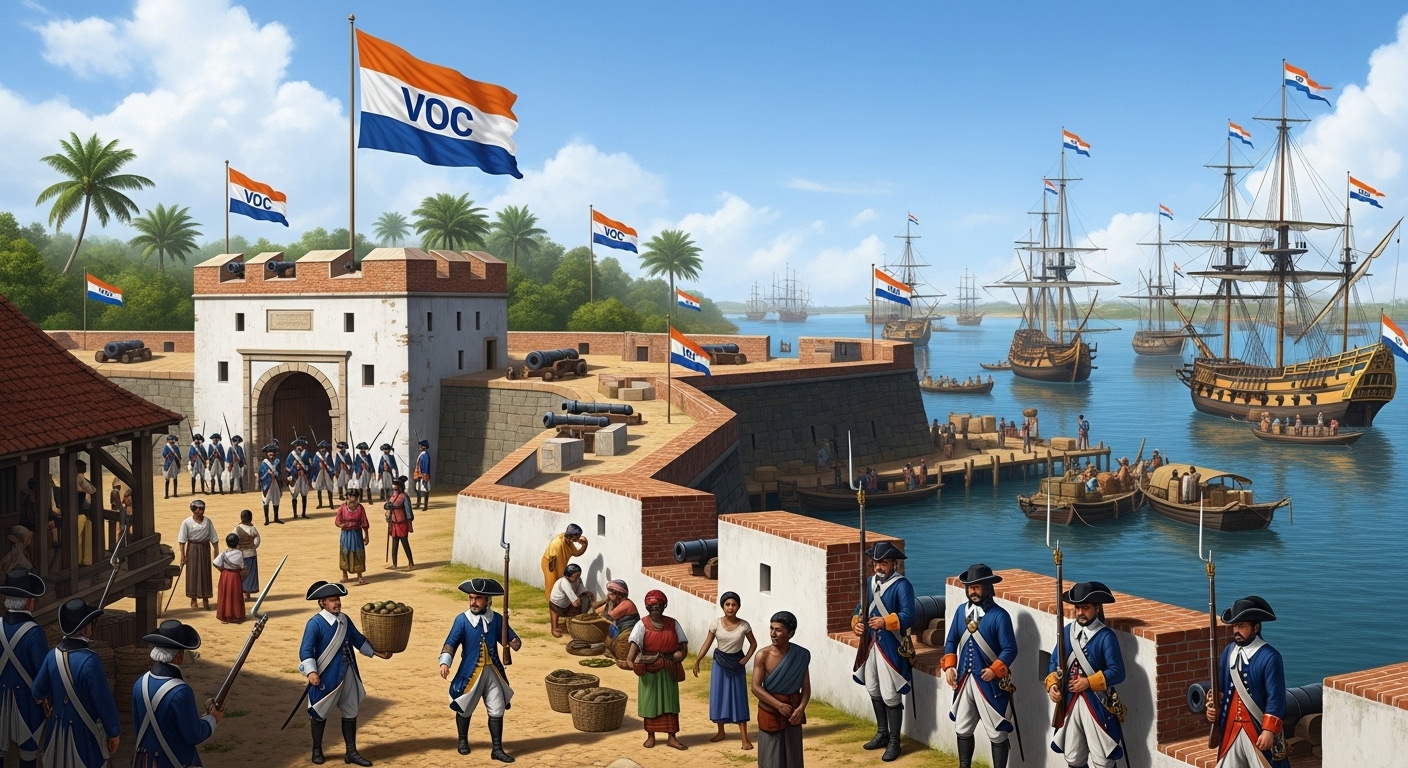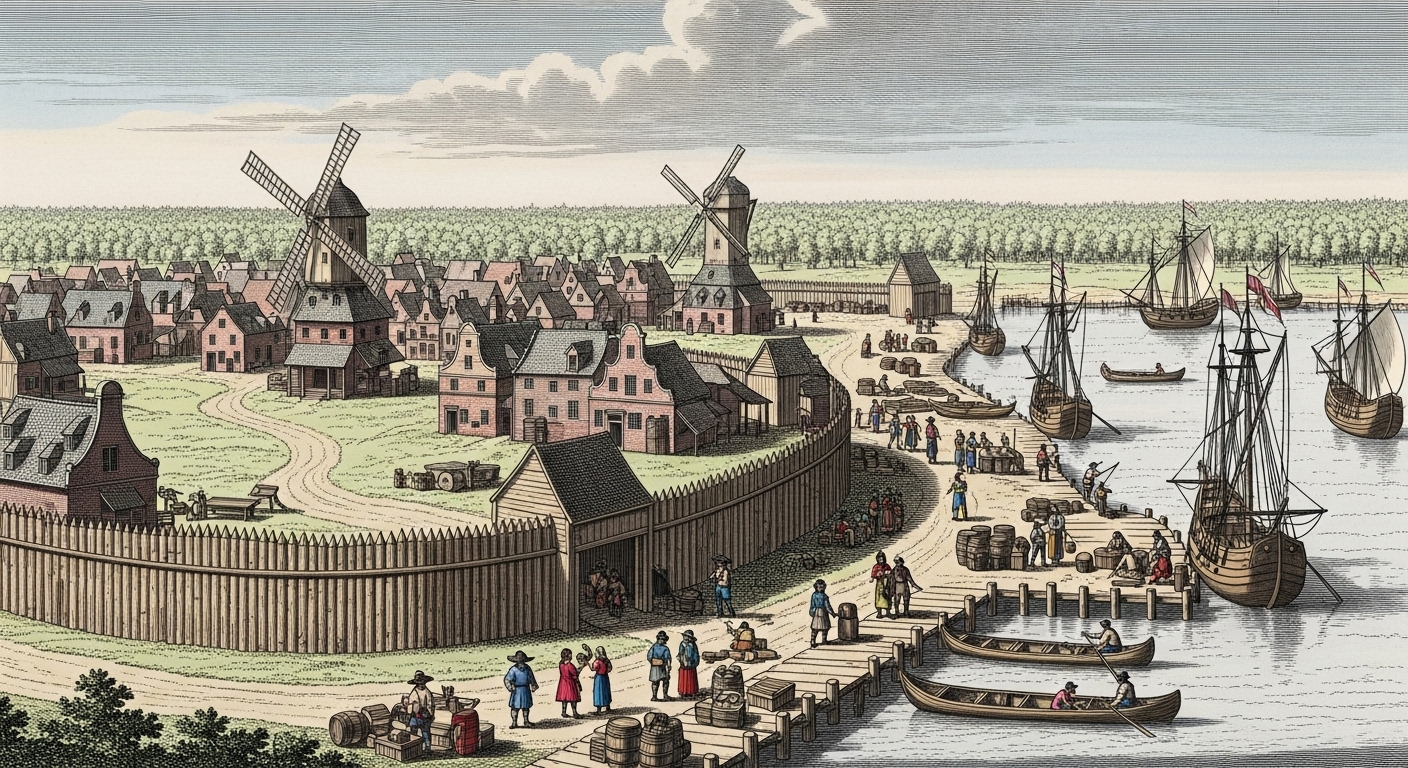In the 17th century, a relatively small European nation emerged as a surprising naval and economic superpower, charting a course for empire-building unlike its contemporaries. While other powers like Spain and Portugal were carving out vast territorial dominions with religious zeal, the Netherlands, during its Golden Age, pursued a predominantly mercantile empire. This global reach was driven by powerful trading companies, advanced naval capabilities, and shrewd economic policies that prioritized profit and trade routes over extensive land acquisition[1].
This article will delve into the unique methods and motivations behind Dutch imperial expansion, exploring how they built an influential, albeit sometimes brutal, global network that left an indelible mark on world history.
The Foundations of Dutch Power: Mercantile Might
The Dutch Golden Age (roughly 1588-1672) was a period of unprecedented economic prosperity, scientific advancement, and cultural flourishing in the Netherlands[4]. Freed from Spanish rule, the young Dutch Republic quickly became the leading maritime and economic power in Europe. This era saw the rapid expansion of global trade, which became the undeniable driving force behind their colonial ambitions. The Dutch understood that wealth lay in controlling the flow of goods, not just the land from which they came.
Key characteristics of Dutch mercantile imperialism included a distinct focus on trade routes and strategic strongholds rather than sprawling territorial conquest. Their emphasis was always on economic exploitation and profit generation. To achieve this, they pioneered advanced financial instruments, including the world’s first modern stock market and the revolutionary joint-stock company, which allowed for massive capital mobilization.
The Architects of Empire: VOC and WIC
The true architects of the Dutch Empire were two unprecedented private enterprises: the Dutch East India Company and the Dutch West India Company.
The Dutch East India Company (VOC – Vereenigde Oostindische Compagnie)
Formed in 1602, the VOC was arguably the world’s first multinational corporation, granted a monopoly by the Dutch States General on all trade east of the Cape of Good Hope and west of the Strait of Magellan. With its own armies and navies, the VOC wielded immense sovereign power, including the right to wage war, sign treaties, and establish colonies[3]. Its primary objective was to control the lucrative spice trade, particularly nutmeg, cloves, and mace, from the East Indies (modern-day Indonesia).
VOC tactics included establishing strategic trading posts, such as Batavia (Jakarta) in Java, and forming alliances with local rulers. However, when diplomacy failed, they resorted to brutal military conquest and suppression, famously exemplified by the Bandanese genocide to secure a nutmeg monopoly. They established direct administration, enforced cultivation of cash crops, and maintained unparalleled shipping and naval superiority. Key territories under VOC influence included the Indonesian archipelago (forming the core of the Dutch East Indies), Ceylon (Sri Lanka), and the Cape Colony in South Africa, which initially served as a vital refreshment station.
The Dutch West India Company (WIC – Westindische Compagnie)
Established in 1621, the WIC mirrored the VOC’s structure but focused on the Americas and West Africa. Its objectives were varied, encompassing trade, privateering against Spanish and Portuguese ships, and involvement in the transatlantic slave trade. The WIC’s tactics involved establishing trading posts and colonies like New Netherland (which included New Amsterdam, now New York City), Curaçao, and Suriname. They exploited resources such as sugar, furs, and tobacco, and played a significant, dark role in the forced transport of enslaved Africans across the Atlantic.
Core Empire-Building Tactics
The success of the Dutch in building their empire stemmed from a synergistic combination of tactical brilliance:
Naval Supremacy and Maritime Expertise
The Dutch possessed advanced shipbuilding and navigation techniques, enabling them to construct efficient, sturdy vessels like the fluyt, designed for maximum cargo capacity and minimal crew. This technological edge ensured their dominance of sea lanes, crucial for both trade and military projection. They strategically placed naval bases and ports globally to protect their vast network.
Economic Ingenuity and Financial Innovation
The use of joint-stock companies (VOC, WIC) was a groundbreaking innovation, allowing for the pooling of massive capital from numerous investors, spreading risk and enabling large-scale ventures. They also developed sophisticated banking and insurance systems, further underpinning their commercial prowess. A core strategy was the relentless pursuit of monopolies and price control, as seen with the highly profitable spice trade.
Strategic Alliances and Diplomacy
Unlike some brute-force empires, the Dutch were adept at playing local powers against each other and skillfully negotiating treaties and trade agreements to their advantage. This allowed them to gain footholds without always resorting to direct military confrontation.
Military Force and Coercion
When diplomacy failed, the VOC and WIC did not hesitate to employ their own private armies. Punitive expeditions and outright conquest were used to secure monopolies and protect assets. Fortifications and garrisons were established globally to safeguard trade routes and valuable resources.
Infrastructural Development
The Dutch invested significantly in infrastructure in their colonies, building ports, vast warehouses, and administrative centers. They also developed sophisticated agricultural systems, particularly for plantations cultivating cash crops.
Case Studies of Dutch Imperialism (Brief Examples)
- The Spice Islands (Indonesia): Here, the Dutch pursued a brutal monopoly, particularly over nutmeg, resulting in devastating consequences for the indigenous Bandanese people.
- New Netherland (North America): Focused primarily on the lucrative fur trade, the Dutch presence in New Netherland was commercial rather than centered on massive European settlement, a key distinction from British colonization.
- Cape Colony (South Africa): Initially a strategic refreshment station for VOC ships, it gradually evolved into a settler colony, profoundly shaping the region’s demographics and history.
Comparison with Other European Powers
The Dutch approach stands in fascinating contrast to other European imperial ventures. Unlike the Spanish and Portuguese, who were heavily driven by religious conversion and sought vast land empires, the Dutch were less focused on proselytizing and more on commerce. Their empire was predominantly sea-centric rather than land-hungry. While the British later adopted many similar mercantile strategies, the Dutch pioneered many aspects, including the corporate structure of empire-building and advanced financial systems. Their unique blend of commercial ambition and military prowess, largely executed through powerful private companies, set them apart as truly innovative empire builders.
Legacy and Decline of the Dutch Empire
The Dutch Empire left a profound and lasting impact on global trade, finance, and the very concept of colonial systems. Their innovations in banking, corporate structures, and maritime law influenced generations of imperial powers. Enduring cultural and linguistic influences can still be found in former colonies, from architecture in places like Curaçao to the legal systems and languages of Indonesia and South Africa. For instance, the Afrikaans language in South Africa is a derivative of 17th-century Dutch[2].
However, the empire’s decline was inevitable. Factors included a series of costly wars with Britain, the rise of competing empires, and the gradual loss of their naval dominance. The process of decolonization largely unfolded after World War II, culminating in the independence of Indonesia in 1949 and Suriname in 1975.
Conclusion
The Netherlands’ empire-building tactics represent a unique chapter in world history. Their empire was not forged by land armies sweeping across continents, but by the relentless pursuit of trade and profit, powered by corporate innovation and maritime mastery. The Dutch legacy stands as a testament to the transformative power of commerce, naval strength, and economic ingenuity in shaping global dynamics and leaving an enduring imprint on the modern world.








